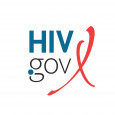On the last two days of the US Conference on HIV/AIDS (USCHA), HIV.gov continued its coverage with conversations about the Ending the HIV Epidemic in the U.S. (EHE) initiative, a syndemic, and the cautious and transparent use of generative AI. On Saturday, the Office of Infectious Disease and HIV/AIDS Policy (OIDP) brought together colleagues from across the government to discuss the syndemic of syphilis, substance use, and HIV. Following the presentations and listening session, Rick Haverkate, MPH, Branch Chief for HIV/HCV/STIs, Indian Health Service, spoke with OIDP ORISE Fellow Arielle Desir. Watch their conversation at the top of this post or on YouTube.
Rick said the syphilis and congenital syphilis outbreaks in tribal communities have impacted the HIV response. “It’s […] great to have the full force of the federal government behind us, but even better, the community response,” he said. “People are really responding to get tested and then come back in for treatment.” He noted that participants will take what they’ve learned from federal, state, and community representatives back to the local level and impact people getting diagnosed, entering care and treatment, and having healthier outcomes.
EHE Initiative in the South
Also on Saturday, Arielle spoke with Gjvar Payne, Executive Director, Capitol Area Reentry Program, Inc., of Baton Rouge, Louisiana, and CAPT John Oguntomilade, BDS, MPH, PhD, Captain, U.S. Public Health Service, EHE Coordination Lead, OIDP, after their session on How the EHE Initiative is Improving HIV Outcomes in the South. Watch their conversation.
CAPT Oguntomilade noted that during the session, presenters highlighted that the EHE initiative is working and has achieved important results. Panelists and participants discussed how EHE can be improved in local communities. He also noted that the South represents about 49 percent of new HIV infections and there are still structural, provider-level, and community-level factors that impact EHE programs in the South.
Gjvar said his mission is to bridge gaps in services and make sure everyone is treated with dignity and compassion. In addition to working with the Capitol Area Reentry Program, he is Chairman of the Ryan White Advisory Council in Baton Rouge. He works to help bring community initiatives to life using the lived experience of community members.
Generative AI Workshop
On Sunday, HIV.gov held a workshop on Expanding the Reach of HIV Communications Through Generative AI. After the workshop, HIV.gov Director Miguel Gomez spoke with co-presenters Dr. Nia Mason and Dr. Quincy Hodges, both Assistant Professors of Mass Communication at Xavier University of Louisiana, about workshop’s highlights. Watch their conversation.
Dr. Mason shared it’s important to understand your community’s needs and to ensure your messages are personal.
Miguel shared three key points from the workshop:
- Talk: It is helpful for HIV communications colleagues to talk with one another about the impact of generative AI on their work and what it may mean or means for their colleagues.
- Assess: Can generative AI help extend the reach of our work?
- Cautious/Transparent: Be cautious and transparent about the use of generative AI.
Dr. Hodges said: “Embrace AI as you see fit for your particular industry.” He also reinforced that equity is essential in the use of generative AI. (Watch for future blogs on HIV.gov for more on this workshop. To watch the conversation described above, click here.)
Organized by NMAC, the 28th Annual USCHA was held Sept. 12-15 in New Orleans. The conference featured sessions on HIV in the South, aging, biomedical interventions, HIV stigma, and more. This year’s theme, “Southern Joy,” emphasized the uniqueness and shared experience of communities in the South. Watch all our conversations from USCHA 2024 on Facebook, YouTuber, and HIV.gov.
This blog post was published September 27, 2024, on HIV.gov.








Comments
Comments